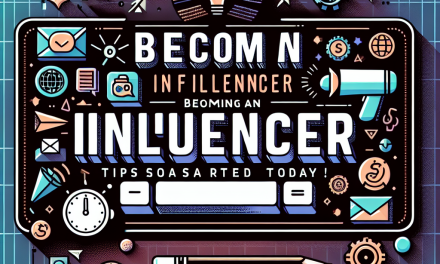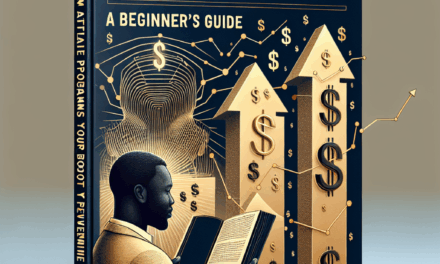Branding 101 for Small Businesses: Stand Out Without a Big Budget
If you’re in your late 20s or early 30s, you’ve grown up online. You don’t need help pressing record—you need help turning what you record into a brand people remember, trust, and buy from. The good news: brand is less about money and more about clarity, consistency, and distinctiveness. Here’s a practical playbook you can execute with the gear and editing skills you already have.
Section 1: What “brand” really means (and why it beats a bigger budget)
– Brand is the shortcut in people’s brains that says “oh, that’s them.” It’s a set of distinctive cues (visual, verbal, and behavioral) tied to a clear promise.
– On a small budget, you win by being easy to recognize and hard to confuse. That comes from sharp positioning, consistent assets, and repeatable content formats—not expensive ads.
Section 2: Sharpen your positioning in one page
You don’t need a 40‑slide deck. You need decisions.
– Audience snapshot:
– Who are they? Age/life stage, role, vibe.
– Problem moments (jobs to be done): “When I’m [situation], I want [progress], so I can [outcome].”
– Category entry points: moments people think about your category (e.g., “running late in the morning” for coffee; “first apartment” for home goods).
– Competitor glance (one-hour audit):
– Top 5 players your audience considers.
– What codes do they share? Colors, claims, tone, content formats.
– Gaps: what no one is owning (e.g., calm minimalism in a loud category; science-backed in a fluffy category).
– Positioning statement template:
– For [audience] who need [key outcome], [brand] is the [category] that delivers [primary benefit], because [credible proof].
– Example: “For busy new managers, Standup Sprint is the coaching studio that turns messy meetings into 15-minute wins, because our templates have shipped inside 50+ tech teams.”
– Three non-negotiables:
– Category: name your lane so people can file you correctly.
– Benefit: what they get (not what you do).
– Reason to believe: the proof (experience, method, ingredients, social proof, guarantee).
Section 3: Build distinctive brand assets you can actually maintain
Pick, then stick. Distinctive beats “pretty.”
– Visual identity (lean kit):
– Color: one primary, one secondary, one accent. Test legibility on video captions and thumbnails.
– Type: one display font for headlines, one sans-serif for body. Choose what’s available on web and your editor to avoid mismatch.
– Logo: simple wordmark + square/round icon for avatars. Ensure it reads at 32×32 px.
– Motion cues: choose 1–2 recurring transitions (e.g., snap zoom + whip pan) and a lower‑third style. Keep them identical across videos.
– Set and wardrobe: choose a background element or color you can replicate (plants + warm lamp; brick wall + blue hoodie). This becomes your visual “hook” in feeds.
– Sonic identity:
– A 1–2 second audio sting you can add to intros/outros.
– Consistent mic tone and background ambience; people recognize sound faster than you think.
– Verbal identity:
– Voice traits (pick three): e.g., practical, warm, slightly witty. Write Do/Don’t rules: “Do use everyday analogies. Don’t use jargon like ‘synergy’.”
– Tagline or promise: short and sticky (“Coffee that respects your morning.”).
– Asset checklist you can finish in a weekend:
– Logo files (dark/light, PNG/SVG)
– Color hex codes
– Font names and sizes
– Lower‑third and caption template
– Thumbnail/title card template
– Audio sting file
– 8–10 branded B‑roll clips you can reuse
– Style guide one‑pager (voice traits, CTA, emoji policy, yes/no words)
Section 4: Message house—know what to say on repeat
– Core promise: 1 sentence.
– 3 proof pillars: examples—ingredient quality, time savings, expert backing.
– Story beats you’ll reuse:
– Origin: why you started (keep it under 30 seconds).
– Method: how you do it differently.
– Customer wins: before → after snapshots.
– Elevator pitch script:
– “We help [who] [achieve X] without [pain], using [your method].”
Section 5: Content system that compounds (you already know how to shoot)
Use your production skills to create repeatable shows, not random posts.
– Content pillars (choose 3–5):
– Teach: tutorials, breakdowns, “watch me do it”
– Proof: case studies, testimonials, behind the scenes
– Community: feature customers, UGC, Q&A
– Brand world: founder POV, values, culture
– Conversion: launches, offers, FAQs, objection handling
– Show formats (give them names so viewers recognize them):
– “60‑Second Fix” (shorts/Reels)
– “Office Hours” (Q&A livestreams)
– “Build in Public” (weekly progress vlog)
– “Deep Dive” (8–12 min YouTube episodes)
– Hook and packaging:
– Hook in first 2–3 seconds: start on the outcome or drama (“Here’s how we cut editing time by 40% without new software.”).
– Visible promise in captions/thumbnails. Avoid mystery; clarity clicks.
– Captions: burn them in, 120–150 wpm pace, pattern breaks every 3–5 seconds.
– Repurpose pipeline (shoot once, publish thrice):
– Record a 10–15 min anchor video.
– Cut 3–5 shorts (9:16), 1 carousel (5–7 frames), 1 email, and a blog summary.
– Pull quotes for LinkedIn/Twitter. Schedule across 2 core platforms + 1 owned channel (email/blog).
– Batch production:
– One monthly shoot day to film 4 anchors and 12–15 shorts.
– One edit day to cut and template everything.
– One distribution block weekly (90 minutes) to post, reply, and repurpose.
Section 6: Pick your platforms with intent
You don’t need to be everywhere. Choose where your audience actually makes decisions.
– If you sell to consumers:
– Instagram/TikTok for discovery and vibe; YouTube for depth and searchability; email/SMS for conversion and retention.
– If you sell to professionals:
– LinkedIn + YouTube + email newsletter. Use short clips to drive to long form and lead magnets.
– Local businesses:
– Google Business Profile (photos, posts, Q&A), Instagram, and short vertical video for local hashtags. Encourage reviews at the point of service.
Tip: claim your handle in the same format everywhere, keep avatar and bio consistent, and pin one “start here” post that articulates your promise.
Section 7: Distribution and community (the free reach most people ignore)
– Collaborations:
– Swap short segments with complementary creators/businesses.
– Co‑host lives. Share audiences through a joint lead magnet or event.
– UGC flywheel:
– Give customers a simple prompt and a small reward (“Show us your morning setup with our coffee; we’ll feature our favorites weekly.”).
– Micro‑influencers:
– Trade product or service credit for honest reviews. Target creators with 3–20k followers who over‑index in comments, not likes.
– Owned audience:
– Start a simple email newsletter. One value tip + one story + one offer. Consistency beats length.
– Local presence:
– Sponsor micro‑moments (open mics, run clubs, co‑working mornings). Capture content and tag partners.
Section 8: Budget‑friendly tools and templates
Keep a short, sustainable stack.
– Creation/editing: CapCut, DaVinci Resolve, Final Cut/Premiere (you’ve got this).
– Design/layout: Canva or Figma for templates.
– Captions/thumbnails: native editors, Canva, or a preset in your NLE.
– Scheduling: native tools or a low‑cost scheduler.
– Landing pages/forms: simple site builder, Notion page, or a form tool tied to your email service.
– Email: an entry‑level service with automation for welcome sequences.
– Analytics: platform insights + Google Analytics + a simple spreadsheet dashboard.
Section 9: Basic site and SEO, quick and dirty
– Homepage sections:
– Above the fold: promise + proof + CTA.
– Social proof: logos, quotes, or before/after.
– Offer: what to buy/book and how.
– About: founder photo + 3‑line origin.
– FAQ: handle top objections.
– SEO basics:
– Own your “brand + category + city” terms.
– Publish one helpful article or video transcription per month targeting a specific problem your audience searches.
– Google Business Profile (if local): accurate hours, fresh photos weekly, ask for reviews with a direct link after purchase.
Section 10: Measurement that fits in one page
Track what actually signals brand strength and growth.
– Awareness proxies:
– Branded search volume, profile visits, direct traffic, views from non‑followers.
– Engagement quality:
– Save rate, shares, average view duration, comments per view.
– Conversion:
– Email sign‑ups, inquiry forms, add‑to‑cart, bookings, coupon redemptions.
– Loyalty:
– Repeat purchase rate, referral rate, review velocity, NPS or a 1‑question satisfaction pulse.
– Simple cadence:
– Weekly: content metrics and inbox/comments themes.
– Monthly: marketing funnel metrics and top insights.
– Quarterly: reposition if signals are flat, not just post more.
Pick one North Star for 90 days (e.g., “email list to 1,000” or “30 qualified inquiries/month”) and align content and offers to it.
Section 11: A 30‑day launch plan
– Week 1: Decide and draft
– Finish your one‑page positioning and message house.
– Choose your three brand assets you’ll commit to (color, font, motion cue).
– Outline 4 show formats and 12 episode ideas.
– Week 2: Build the kit
– Create logo variations, thumbnail template, lower‑third, audio sting.
– Write bios for each platform and a “start here” pinned script.
– Set up basic site/landing page and email welcome sequence.
– Week 3: Produce and publish
– Batch film 4 anchor videos + 12 shorts.
– Edit, caption, and schedule first two weeks.
– Publish your “start here” post and first anchor; cut it into shorts.
– Week 4: Distribute and learn
– Run two collabs or cross‑posts.
– Ask 10 customers for reviews/UGC with a simple prompt.
– Review metrics; double down on the best‑performing hook and format; create 8 more shorts from what worked.
Section 12: Scripts and templates you can copy
– 15‑second short script:
– Hook (2s): “Stop wasting 20 minutes every morning on coffee lines.”
– Insight (5s): “We pre‑grind fresh beans nightly and deliver by 7AM.”
– Proof (5s): “Rated 4.9 stars; 600 mornings saved last month.”
– CTA (3s): “DM ‘MORNING’ for 20% off your first week.”
– 30‑word bio:
– “We help [audience] get [benefit] without [pain] using [method]. New episodes every [day]. Start here: [signature promise].”
– Case study structure (60–90 sec):
– Before → Tension → Intervention → After → Quote → CTA.
– Offer stack (for launches):
– Core offer + fast‑action bonus + guarantee + deadline (with a reason).
Section 13: Four quick mini‑playbooks by business type
– Mobile coffee cart:
– Visual: warm browns + cream accent; handheld B‑roll steam shots.
– Formats: “60‑sec route updates,” “Meet a regular,” “Bean of the week.”
– Distribution: local hashtags, Google Business updates, cross‑post with nearby gyms/co‑working spaces.
– CTA: pre‑order link; punch‑card referral in Stories.
– Fitness coach:
– Visual: clean, bright; on‑screen timers; signature chime.
– Formats: “3‑move fix,” “Client check‑ins,” “Myth busts.”
– Proof: weekly body‑neutral progress stories and strength PRs.
– Offer: 4‑week starter with live kickoff; community chat.
– DTC candle brand:
– Visual: textured close‑ups, match‑strike audio sting.
– Formats: “Scent stories,” “Pour with me,” “Home vignettes.”
– Partnerships: micro‑creators in home decor; bundle collabs.
– CTA: scent quiz to email list; seasonal drops with waitlists.
– Freelance designer:
– Visual: screen overlays, cursor‑tracked demos, crisp captions.
– Formats: “1‑minute teardown,” “Process in 5 steps,” “Client wins.”
– Distribution: LinkedIn carousels + YouTube; guest spots on niche podcasts.
– Offer: productized packages with transparent scope and timeline.
Section 14: Common pitfalls (and fixes)
– Pitfall: You change your look every month.
– Fix: lock your kit for 90 days. Iterate content, not brand assets.
– Pitfall: Content is helpful but forgettable.
– Fix: add a signature motif (sound, transition, prop, or phrase).
– Pitfall: Posting without distribution.
– Fix: 50/50 rule—spend as much time distributing as creating.
– Pitfall: Selling features, not outcomes.
– Fix: lead with before/after and social proof.
– Pitfall: Waiting for perfect.
– Fix: minimum viable brand kit and publish cadence; refine in public.
Section 15: Light legal and name hygiene
– Search your name on major platforms and your state’s business registry.
– Do a basic trademark search to avoid obvious conflicts.
– Secure the domain/handles you’ll actually use.
– Keep receipts and a changelog of your assets; it helps if you file later.
Section 16: Your sustainable cadence
– Daily (30–45 min): engage comments/DMs, save audience questions, capture B‑roll.
– Weekly (2–3 hours): publish anchor + shorts, send one email, outreach to one collaborator.
– Monthly (1 day): batch shoot/edit, refresh top‑performing posts, update site with one new proof point.
– Quarterly (half day): review positioning, refine your show formats, update the brand kit if needed.
Closing thought
Brand isn’t a veneer you apply after you “make it.” It’s the system that helps you get there faster—by making you easy to spot, easy to trust, and easy to choose. Commit to a clear promise, build a few distinctive cues, ship on a sustainable cadence, and let your content do compounding work. With the skills and tools you already have, that’s more than enough to stand out without a big budget.





